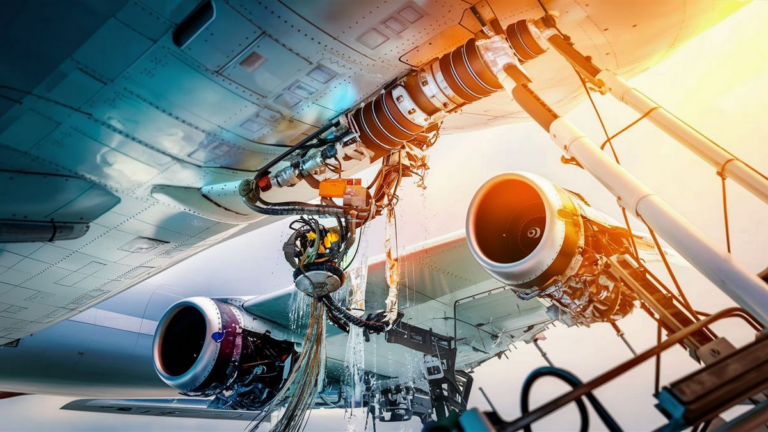Ensuring the safety and efficiency of flights in adverse weather conditions is paramount in the aviation industry. One critical aspect of aircraft operation in icy conditions is the implementation of anti-icing systems. These systems play a vital role in preventing the formation of ice on crucial surfaces of the aircraft, thereby maintaining aerodynamic performance and safeguarding the integrity of flight.
The Importance of Anti-Icing Systems
Anti-icing systems are integral components of aircraft design, especially for regions prone to inclement weather. Ice accumulation on aircraft surfaces, such as wings, tail, and engine inlets, can disrupt airflow, increase drag, and compromise lift. This can lead to diminished control responsiveness and, in severe cases, catastrophic accidents. Hence, the implementation of effective anti-icing systems is imperative to mitigate these risks.
Types of Anti-Icing Systems
There are various types of anti-icing systems utilized in modern aircraft, each tailored to specific components and operating conditions:
- De-Icing Boots: These are inflatable rubber boots installed on the leading edges of wings and tail surfaces. When activated, they inflate and break the ice formation, which is then shed by aerodynamic forces.
- Hot Air Anti-Icing: In this method, warm air is directed through ducts to heat critical surfaces prone to icing, preventing ice accretion. This system is commonly employed in engine inlets and on propeller blades.
- Electrically Heated Systems: Utilizing electric heating elements embedded within the aircraft’s surfaces, this system prevents ice buildup by maintaining them above freezing temperatures.
- Liquid Anti-Ice Systems: Aircraft equipped with this system spray a specialized anti-icing fluid onto critical surfaces before takeoff, forming a protective layer that prevents ice formation during flight.
Integration and Operation
Anti-icing systems are seamlessly integrated into the aircraft’s overall design and are typically controlled by the flight crew or automated systems. Sensors continuously monitor environmental conditions, triggering the activation of anti-icing systems when necessary. This proactive approach ensures that the aircraft remains free from ice buildup throughout its journey, regardless of external weather conditions.
Regulatory Compliance and Safety Standards
The aviation industry adheres to stringent regulations and safety standards concerning anti-icing systems. Aircraft manufacturers must demonstrate compliance with regulatory requirements, ensuring that anti-icing systems are reliable, effective, and thoroughly tested under various conditions. Additionally, ongoing maintenance and inspection protocols are implemented to verify the functionality of these systems, guaranteeing optimal performance during flight operations.
In conclusion, anti-icing systems play a pivotal role in enhancing the safety and reliability of aircraft operations, particularly in challenging weather conditions. By employing a combination of advanced technologies and rigorous safety protocols, these systems enable aircraft to operate efficiently while mitigating the risks associated with ice accumulation. As aviation continues to evolve, the development of innovative anti-icing solutions remains essential to ensure the continued safety and success of air travel worldwide.
Frequently Asked Questions
Here are some commonly asked questions regarding anti-icing systems in aircraft:
| Question | Answer |
|---|---|
| 1. How do anti-icing systems contribute to flight safety? | Anti-icing systems prevent ice accumulation on critical surfaces of the aircraft, which helps maintain aerodynamic performance, control responsiveness, and overall flight safety. |
| 2. Are anti-icing systems always active during flight? | No, anti-icing systems are typically activated when necessary, based on environmental conditions and sensor inputs. They are designed to be efficient and activate only when ice formation is detected or anticipated. |
| 3. How often do anti-icing systems require maintenance? | Maintenance schedules for anti-icing systems vary depending on the type of system and regulatory requirements. However, regular inspections and maintenance are crucial to ensure the reliability and effectiveness of these systems. |
| 4. Can anti-icing systems completely eliminate the risk of ice-related incidents? | While anti-icing systems significantly reduce the risk of ice-related incidents, they cannot completely eliminate it. Pilots must still exercise caution and adhere to operating procedures, especially in severe weather conditions. |
Environmental Considerations
When designing anti-icing systems, environmental factors such as temperature, humidity, and altitude must be taken into account. These factors can influence the effectiveness and performance of anti-icing measures, requiring careful calibration and testing.
Advancements in Anti-Icing Technology
As technology continues to advance, there is ongoing research and development aimed at improving the efficiency and effectiveness of anti-icing systems. This includes the exploration of novel materials, advanced heating methods, and predictive algorithms to enhance ice detection and prevention.
International Standards and Collaboration
International aviation authorities collaborate to establish harmonized standards and regulations regarding anti-icing systems to ensure consistency and interoperability across different regions. This collaboration facilitates the safe and efficient operation of aircraft worldwide.
See also:






